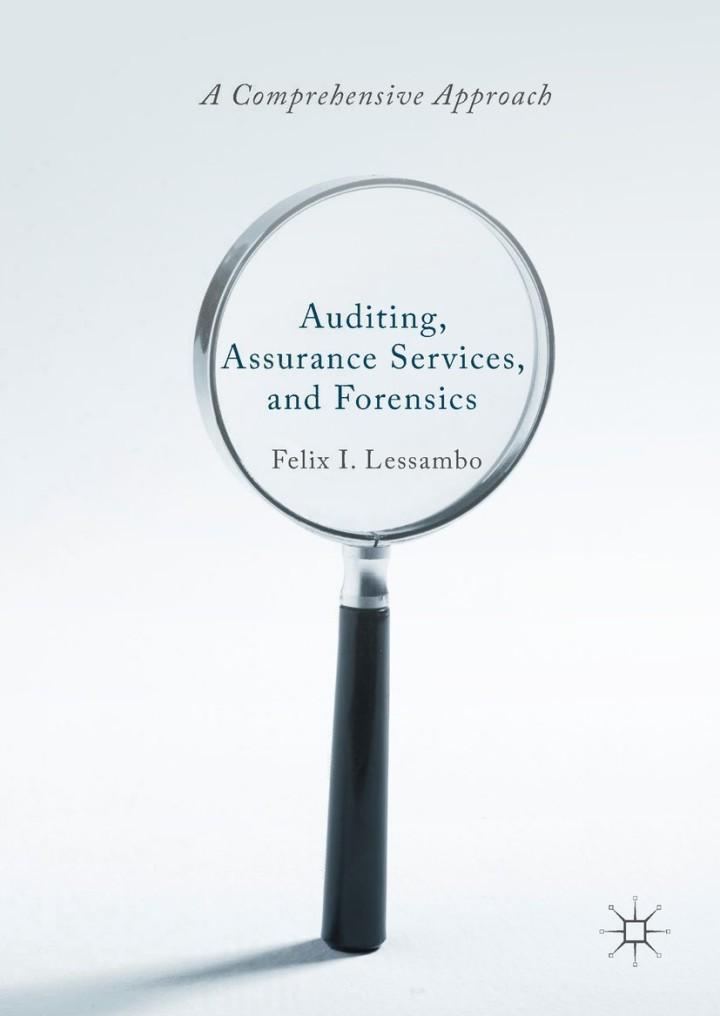Question
You have just been hired as a financial analyst for Lydex Company, a manufacturer of safety helmets. Your boss has asked you to perform a
| You have just been hired as a financial analyst for Lydex Company, a manufacturer of safety helmets. Your boss has asked you to perform a comprehensive analysis of the companys financial statements, including comparing Lydexs performance to its major competitors. The companys financial statements for the last two years are as follows: |
| Lydex Company Comparative Balance Sheet | ||||
| This Year | Last Year | |||
| Assets | ||||
| Current assets: | ||||
| Cash | $ | 960,000 | $ | 1,260,000 |
| Marketable securities | 0 | 300,000 | ||
| Accounts receivable, net | 2,700,000 | 1,800,000 | ||
| Inventory | 3,900,000 | 2,400,000 | ||
| Prepaid expenses | 240,000 | 180,000 | ||
|
|
|
|
| |
| Total current assets | 7,800,000 | 5,940,000 | ||
| Plant and equipment, net | 9,300,000 | 8,940,000 | ||
|
|
|
|
| |
| Total assets | $ | 17,100,000 | $ | 14,880,000 |
|
|
|
|
| |
| Liabilities and Stockholders' Equity | ||||
| Liabilities: | ||||
| Current liabilities | $ | 3,900,000 | $ | 2,760,000 |
| Note payable, 10% | 3,600,000 | 3,000,000 | ||
|
|
|
|
| |
| Total liabilities | 7,500,000 | 5,760,000 | ||
|
|
|
|
| |
| Stockholders' equity: | ||||
| Common stock, $78 par value | 7,800,000 | 7,800,000 | ||
| Retained earnings | 1,800,000 | 1,320,000 | ||
|
|
|
|
| |
| Total stockholders' equity | 9,600,000 | 9,120,000 | ||
|
|
|
|
| |
| Total liabilities and stockholders' equity | $ | 17,100,000 | $ | 14,880,000 |
|
|
|
|
| |
|
| ||||
| Lydex Company Comparative Income Statement and Reconciliation | ||||
| This Year | Last Year | |||
| Sales (all on account) | $ | 15,750,000 | $ | 12,480,000 |
| Cost of goods sold | 12,600,000 | 9,900,000 | ||
|
|
|
|
| |
| Gross margin | 3,150,000 | 2,580,000 | ||
| Selling and administrative expenses | 1,590,000 | 1,560,000 | ||
|
|
|
|
| |
| Net operating income | 1,560,000 | 1,020,000 | ||
| Interest expense | 360,000 | 300,000 | ||
|
|
|
|
| |
| Net income before taxes | 1,200,000 | 720,000 | ||
| Income taxes (30%) | 360,000 | 216,000 | ||
|
|
|
|
| |
| Net income | 840,000 | 504,000 | ||
| Common dividends | 360,000 | 252,000 | ||
|
|
|
|
| |
| Net income retained | 480,000 | 252,000 | ||
| Beginning retained earnings | 1,320,000 | 1,068,000 | ||
|
|
|
|
| |
| Ending retained earnings | $ | 1,800,000 | $ | 1,320,000 |
|
|
|
|
| |
|
| ||||
| To begin your assigment you gather the following financial data and ratios that are typical of companies in Lydex Companys industry: |
| Current ratio | 2.3 | |||||||||||||||||||||||||||||||||||||||||||
| Acid-test ratio | 1.2 | |||||||||||||||||||||||||||||||||||||||||||
| Average collection period | 30 | days | ||||||||||||||||||||||||||||||||||||||||||
| Average sale period | 60 | days | ||||||||||||||||||||||||||||||||||||||||||
| Return on assets | 9.5 | % | ||||||||||||||||||||||||||||||||||||||||||
| Debt-to-equity ratio | 0.65 | |||||||||||||||||||||||||||||||||||||||||||
| Times interest earned ratio | 5.7 | |||||||||||||||||||||||||||||||||||||||||||
| Price-earnings ratio | 10 | |||||||||||||||||||||||||||||||||||||||||||
|
| ||||||||||||||||||||||||||||||||||||||||||||
Step by Step Solution
There are 3 Steps involved in it
Step: 1

Get Instant Access to Expert-Tailored Solutions
See step-by-step solutions with expert insights and AI powered tools for academic success
Step: 2

Step: 3

Ace Your Homework with AI
Get the answers you need in no time with our AI-driven, step-by-step assistance
Get Started


